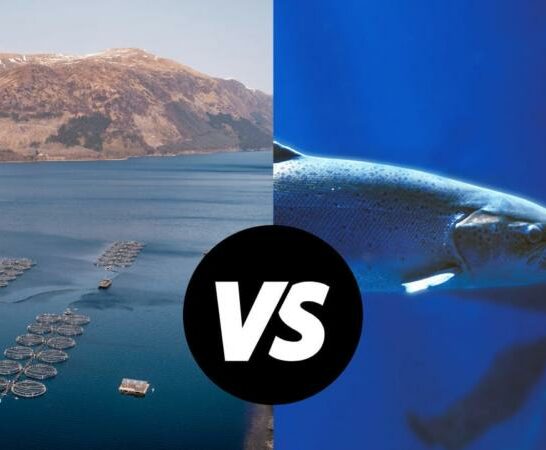All wild types of salmon live in the ocean and migrate upriver to spawn in freshwater.
Not all varieties of salmon are identical, though, especially the Atlantic salmon and their cousins, the Scottish salmon, that are farmed off the coast of Scotland.
Scottish salmon vs Atlantic salmon
The difference between the Scottish Salmon salmo salar linneaus and the Atlantic salmon salmo salar is that the Scottish salmon is farmed off the coast of Scotland and is often referred to as farmed Atlantic salmon. The Atlantic salmon is found in the Atlantic ocean whereas the Scottish salmon is confined to Scotland. The fish are similar in appearance and breeding habits. They are also about the same size and weight.
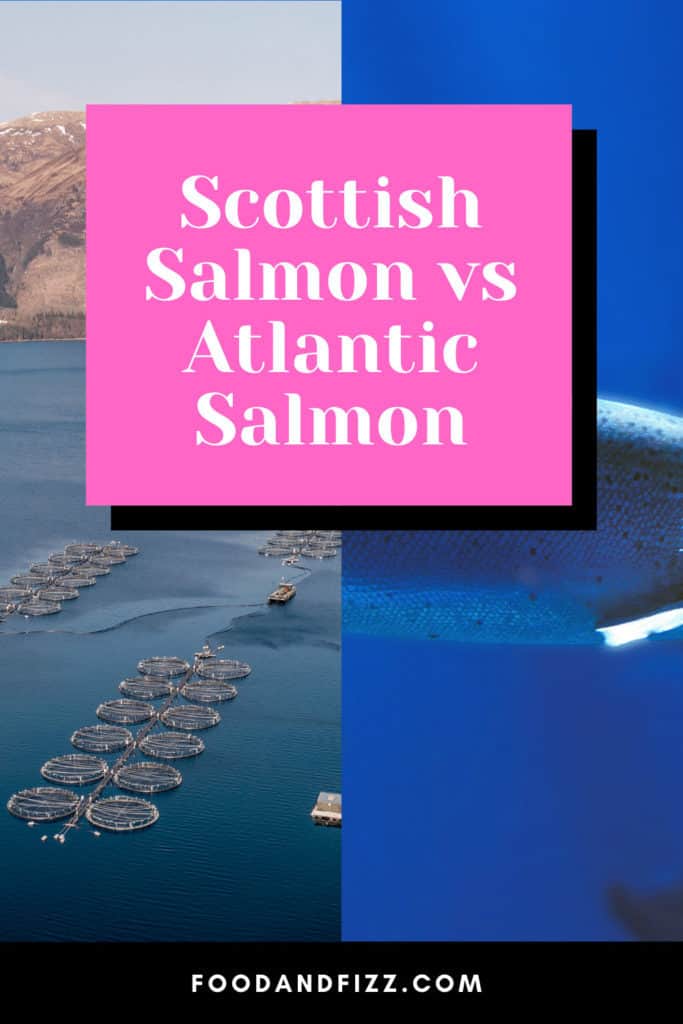
Biological names of the Scottish and Atlantic salmon
Both types of salmon belong to the family ‘Salmonidae’.
The Atlantic salmon is the third biggest of the family.
The biological name of the Atlantic salmon is salmo salar, while that of the Scottish salmon is salmo salar linneaus.
The common name of the Scottish salmon is ‘farmed Atlantic salmon’, indicating the relationship between the two.
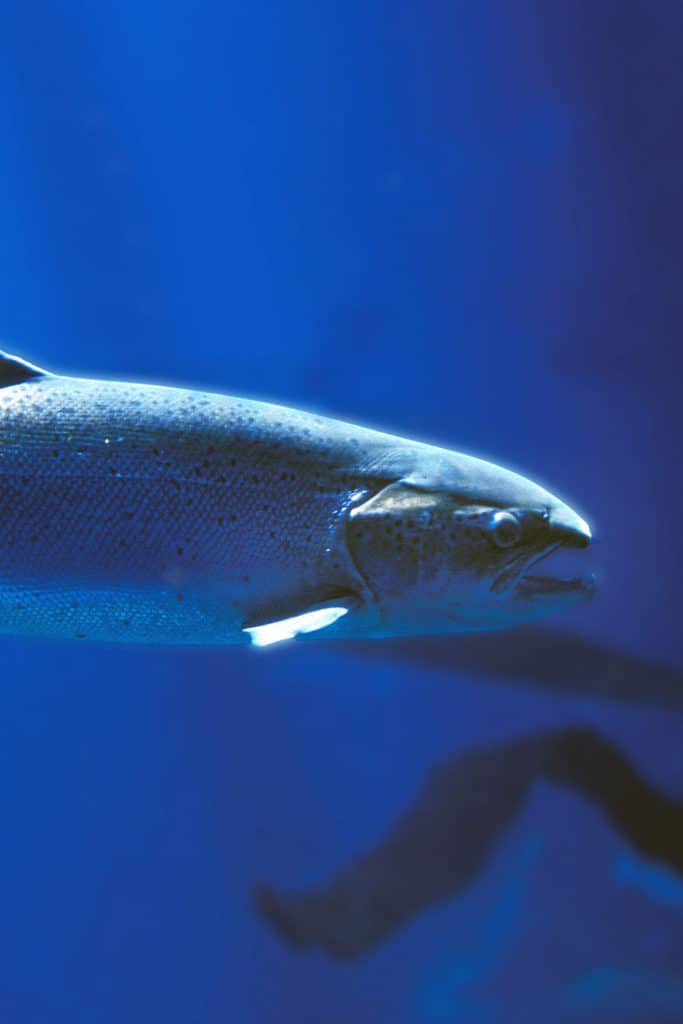
Comparison between the Scottish and Atlantic salmon
Both types of salmon belong to the family ‘Salmonidae’.
The Atlantic salmon and Scottish salmon are very similar in size and weight.
Atlantic salmon
The average size of the Atlantic salmon is 28 – 30 inches (71 cm – 76 cm), although they have been measured up to 30 lb (13.6 kg). These salmon usually weigh between 8 and 12 lbs (3.6 kg – 5.4 kg).
Scottish salmon
Like the Atlantic salmon, the average size of the Scottish salmon is 28 – 30 inches (71 – 76 cms) and the average weight is 10 – 12 lbs (4.5- 5.5 kg).
The largest Scottish salmon caught in Scotland weighed about 60 lbs (22 kg).
Farmed Atlantic salmon are raised until they are about 3 years old before they are harvested.
By this stage, they are usually about average size and weight.
Wild Scottish salmon spend longer out in the sea and will grow to be heavier and bigger.
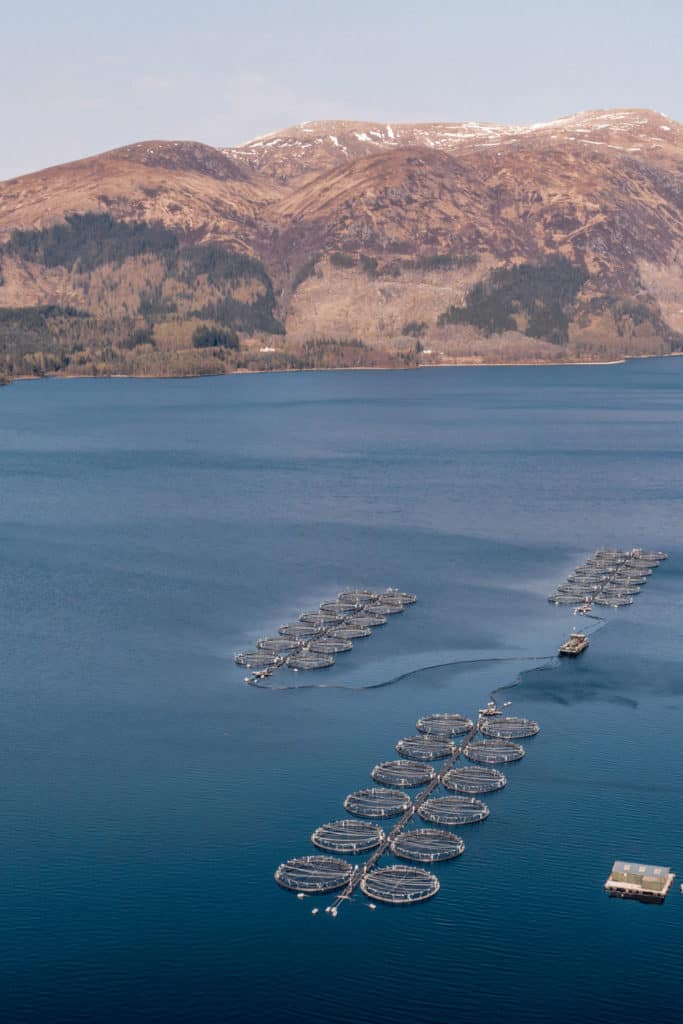
Regions and habitat
Both Atlantic and Scottish salmon are found in the Atlantic Ocean, although the Scottish salmon are more confined to the area around Scotland.
Scottish salmon
Scottish salmon is farmed in the Atlantic Ocean off the coast of Scotland. They are strong fish with high-fat content and a mild flavor.
The Scottish wild salmon is the variety that lives in the open sea.
This differs slightly as it is silver on the outside and has deep pink, firm flesh.
Like all salmon, the Scottish wild salmon breeds in rivers.
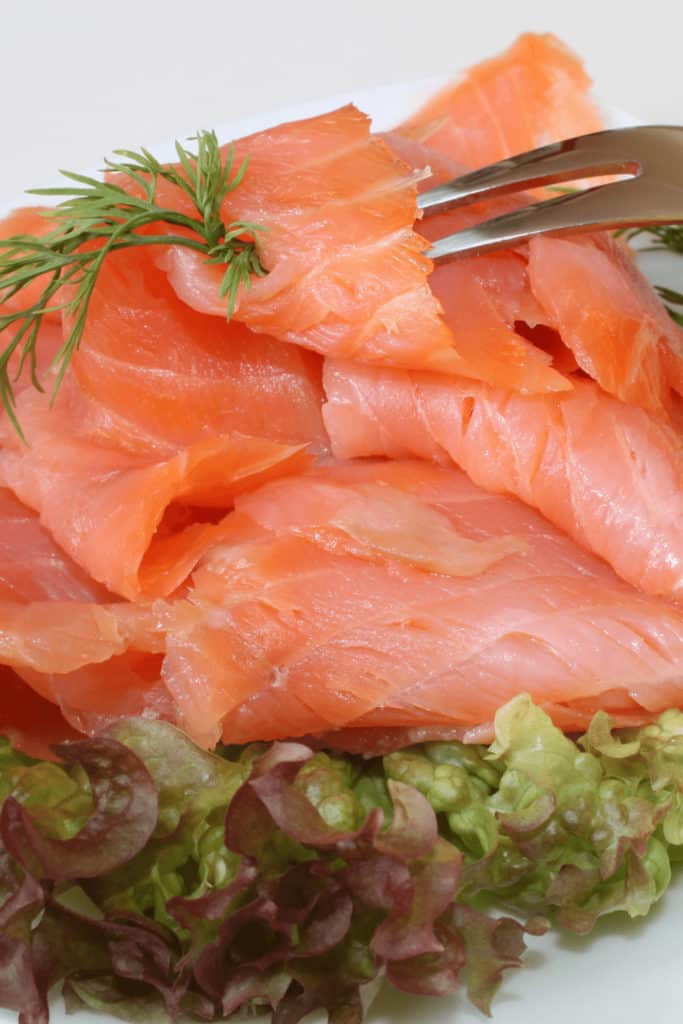
Atlantic salmon
The Atlantic salmon is found in the mid-Atlantic, although there is a large population on the east coast of the US, north of New England.
The Atlantic salmon is also found on the coast of Scotland and the United Kingdom.
Feeding
Atlantic salmon
Atlantic salmon in rivers is mainly consuming aquatic insects such as nymphs and larvae according to FAO Fisheries and Aquaculture Department.
At sea, their diet consists of crustaceans and fish.
Scottish salmon
According to BBC, farmed Scottish salmon is fed processed food and is treated with medicines.
Most Scottish salmon that end up on a plate are farmed as commercial fishing of Scottish salmon has become rare.
Reproduction
All salmon spawn in rivers, which means they will swim through the mouth of a river of significant enough size and then upriver until they reach suitable spawning grounds.
Atlantic salmon
Atlantic salmon are described as being ‘Anadromous’, which means they can survive in salt and fresh water.
Like all salmon, they spawn in freshwater, in the rivers of North Eastern America, Iceland, Europe, and North-Western Russia.
Spawning takes place in Autumn, in the spawning grounds upriver.
A single female may lay up to 7000 eggs.
The male then fertilizes the eggs and both parents cover them with sand.
Of the eggs laid by one female, up to 85 % can be lost.
The survival and gestation time of the salmon is affected by the temperature of the water.
The amount of gas, in the form of oxygen and carbon dioxide, is also an important factor.
The eggs can hatch anywhere from six to twenty weeks.
The fry can usually be seen from late May to early June and will move into the ocean to grow.
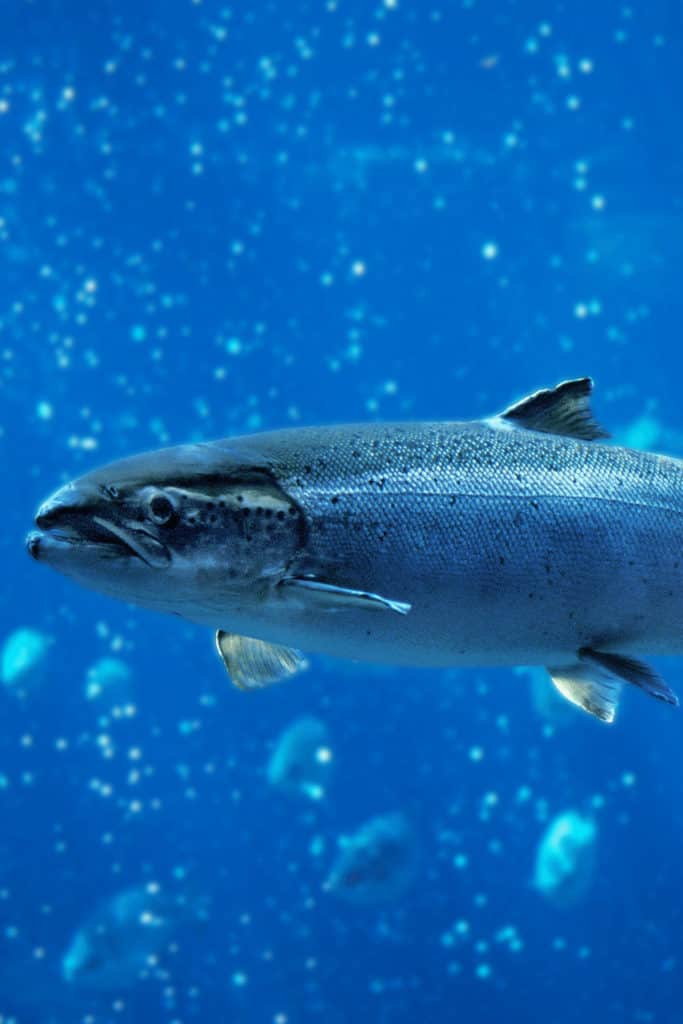
Scottish salmon
When salmon is farmed, it is for commercial use and there should be some standardization in the size and quality of the fish.
They are kept in cages until they are big enough to be harvested.
This is at about two to three years, which is before they are old enough to spawn.
Sometimes, though, the farmed fish escape from their cages and go out into the sea.
If this happens and farmed salmon reproduce with wild salmon, it can jeopardize the populations of wild salmon.
Interbreeding with the farmed varieties is not necessarily healthy for wild populations.
The introduction of much more fish into the seas will suddenly increase the population and there will be much more fish competing for food.
State of the population
Over-fishing has historically proven to have an effect on the population of certain types of fish.
The difference between farmed and wild fish is seen in the state of the population of the two varieties.
Atlantic salmon
Atlantic salmon are considered to be endangered because they are threatened in a number of ways, most of which are linked to the effect of humans.
When dams or culverts are built on rivers, they block the fish’s migratory routes between their spawning grounds and saltwater.
This means that the fish will not be able to spawn, or they will spawn in areas that are not really suitable. This will affect the population numbers.
Fishing also has an impact on the number of fish, as does the degradation of the habitat.
The Atlantic salmon were once native to every coastal river along the northeast American coast, but the population has been reduced by dams, pollution, and overfishing.
Scottish salmon
Scottish salmon are not endangered yet, mainly because of the numbers being farmed.
However, as these fish are not allowed to breed, there are also some effects on the population, which is considered at risk.
The recommendations are that farmed Atlantic salmon (Scottish salmon) be made sterile, so they don’t reproduce.
Some do escape, though, and spawn with wild salmon.
Almost 70% of the numbers do not return to the rivers where they usually spawn.
Frequently Asked Questions About Scottish Salmon vs Atlantic Salmon
Where do Atlantic salmon spawn?
Atlantic salmon spawn in rivers. The adults swim upriver during the Autumn and spawn in the upper regions of the river. The eggs hatch after about 6 weeks.
Are Scottish salmon really from Scotland?
Scottish salmon is a variety of Atlantic salmon that is farmed off the coast of Scotland. They are also known as farmed Atlantic salmon.
Conclusion About Scottish Salmon vs Atlantic Salmon
Atlantic salmon and Scottish salmon are both varieties of the same family.
They are similar in many ways, but there are also differences between them.
These are linked to the fact that the Scottish salmon is farmed, while the Atlantic salmon is wild.

